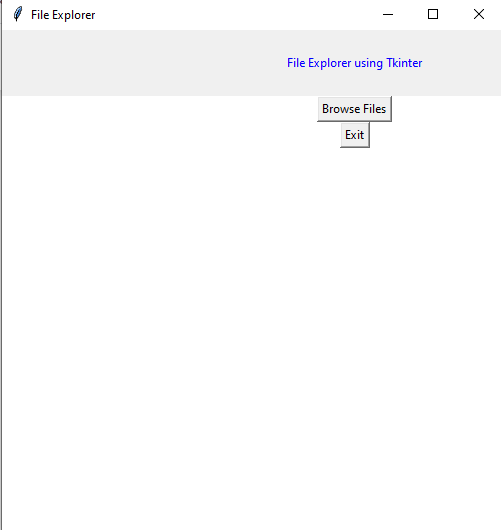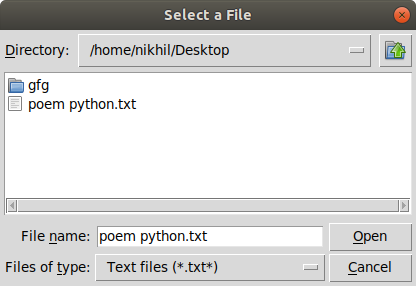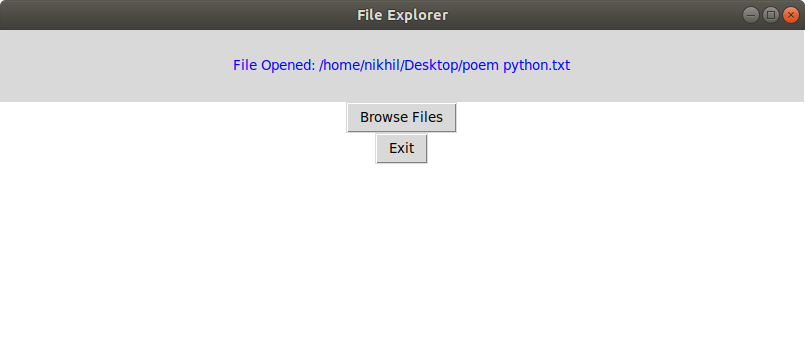File Explorer in Python using Tkinter
Last Updated :
15 Feb, 2021
Prerequisites: Introduction to Tkinter
Python offers various modules to create graphics programs. Out of these Tkinter provides the fastest and easiest way to create GUI applications.
The following steps are involved in creating a tkinter application:
- Importing the Tkinter module.
- Creation of the main window (container).
- Addition of widgets to the main window
- Applying the event Trigger on widgets like buttons, etc.
The GUI would look like below:

Creating the File Explorer
In order to do so, we have to import the filedialog module from Tkinter. The File dialog module will help you open, save files or directories.
In order to open a file explorer, we have to use the method, askopenfilename(). This function creates a file dialog object.
Syntax: tkFileDialog.askopenfilename(initialdir = “/”,title = “Select file”,filetypes = ((“file_type”,”*.extension”),(“all files”,”*.*”)))
Parameters:
- initialdir: We have to specify the path of the folder that is to be opened when the file explorer pops up.
- title: The title of file explorer opened.
- filetypes: Here we can specify different kinds of file extensions so that the user can filter based on different file types
Below is the implementation
Python3
from tkinter import *
from tkinter import filedialog
def browseFiles():
filename = filedialog.askopenfilename(initialdir = "/",
title = "Select a File",
filetypes = (("Text files",
"*.txt*"),
("all files",
"*.*")))
label_file_explorer.configure(text="File Opened: "+filename)
window = Tk()
window.title('File Explorer')
window.geometry("500x500")
window.config(background = "white")
label_file_explorer = Label(window,
text = "File Explorer using Tkinter",
width = 100, height = 4,
fg = "blue")
button_explore = Button(window,
text = "Browse Files",
command = browseFiles)
button_exit = Button(window,
text = "Exit",
command = exit)
label_file_explorer.grid(column = 1, row = 1)
button_explore.grid(column = 1, row = 2)
button_exit.grid(column = 1,row = 3)
window.mainloop()
|
Output:



Like Article
Suggest improvement
Share your thoughts in the comments
Please Login to comment...